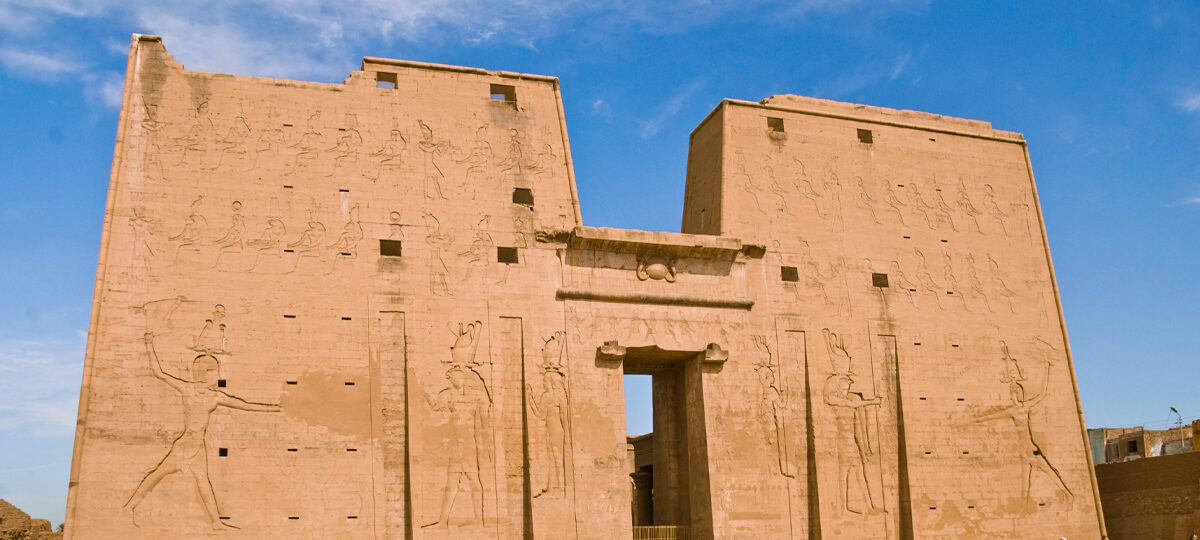Temple of Edfu
Edfu Temple was dedicated to the falcon god Horus [Read more about the Eye of Horus], is second only to the Temple of Karnak in terms of importance and preservation in Egypt. There are 137 meters in length, 79 meters in width, and 36 meters in height. This pylon is a symbol of how temples are usually built.
Where the Temple of Edfu is?
The city of Edfu and its namesake temple are on the west bank of the Nile, 115 kilometers south of Luxor and 105 kilometers north of Aswan. is one of the four temples and places where the story of Osiris, Isis, and Horus took place. Nile cruises often stop at this temple. Ra’s children. This temple is a place of worship for Horus, the god of falcons.

The stunning architecture of the Edfu Temple
With its pylon, courtyard, and pronaos or hypostyle chamber, the temple of Edfu has kept its traditional Greek and Roman design. The next area was the sanctuary’s naos, which led to the temple’s innermost sanctum, where the god statue of Horus was kept. When Napoleon took over Egypt in 1798, a dozen metres of desert sand covered the temple. In fact, no one knew about it again until 1860, when it was found again.
The temple of Edfu was no longer used as a place of worship after Theodosius I’s order in 391 AD, which banned all religions other than Christianity from the Roman Empire. When Christians took over Egypt, like they did everywhere else, they destroyed a lot of the temple’s sculptures. It is thought that religious icons that were seen as heathen were burned by setting them on fire. The blackened ceiling of the hypostyle hall shows that this is still true today.

The pylon at Edfu’s temple is the second-largest after the one at Karnak (36x74m). Before the pylon walls, there are four spaces on either side of the entrance door where flag masts used to be. After that, you’ll be in a large courtyard with columns all around. At its end, just inside the door to the grand hypostyle hall, there are two huge falcons.
Each one is 3.2 metres tall and has the crowns of both Upper and Lower Egypt on its head. The left falcon is in great shape, but it has lost its original painting, which was no doubt a stunning likeness of the bird.
We leave the falcons behind and go into the grand hypostyle hall, which has eighteen huge columns holding it up. All of the building’s parts, including the walls, ceiling, and columns, are richly decorated. On the walls are pictures of the Ptolemaic kings, and on the roof are pictures of the heavens. The second hypostyle chamber is the sanctuary’s precinct, where a granite monolith held a golden statue of the god Horus.
Edfu is a reliable source of information about the religious culture of ancient Egypt. Thanks to the translation of the hieroglyphic writing on the walls, columns, and ceilings of Edfu temple, we can now find out more about the undiscovered treasures of Ancient Egypt in a more direct and real way.

